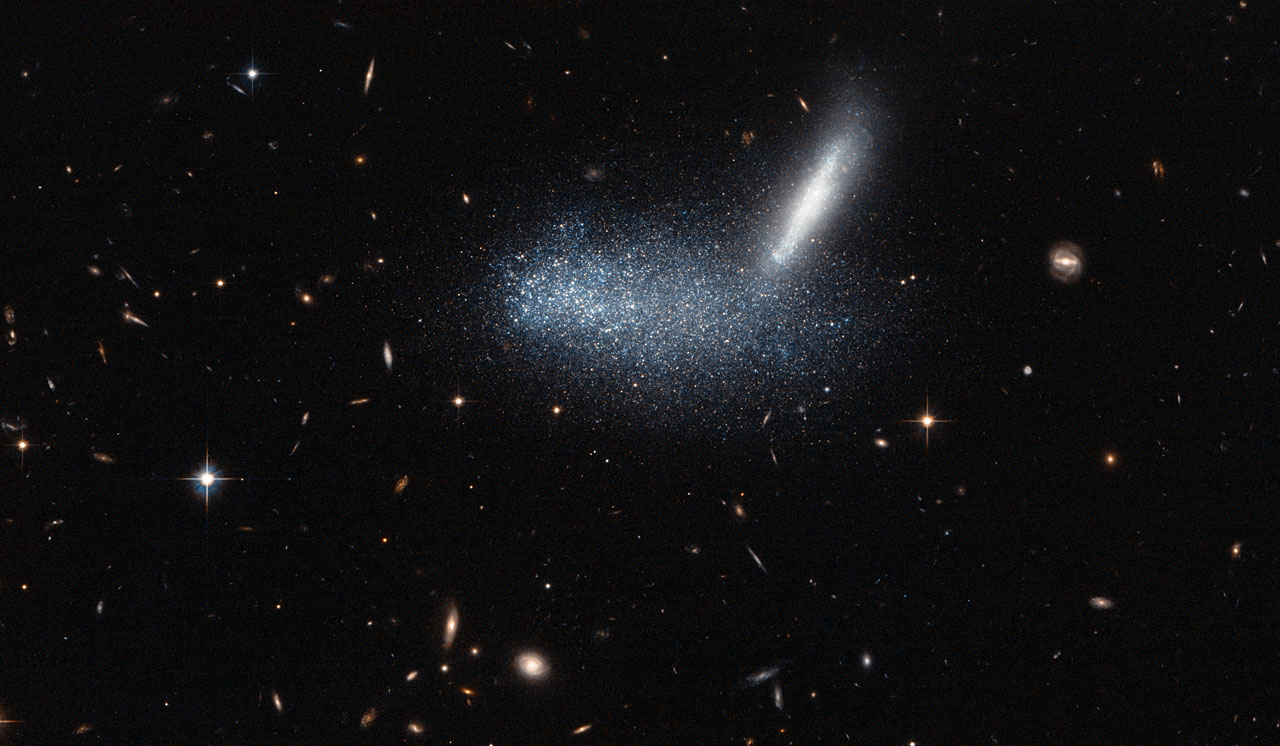HEIC: A Cosmic Optical Illusion (ESO 252-1)
Posted: Sat Aug 24, 2013 5:24 pm
A Cosmic Optical Illusion
ESA/HEIC Hubble Picture of the Week | 2013 Aug 19
<< Previous ESA/HEIC Hubble POTW
ESA/HEIC Hubble Picture of the Week | 2013 Aug 19
At first glance, this Hubble picture appears to capture two space colossi entangled in a fierce celestial battle, with two galaxies entwined and merging to form one (ESO 252-1). But this shows just how easy it is to misinterpret the jumble of sparkling stars and get the wrong impression — as it’s all down to a trick of perspective.
By chance, these galaxies appear to be aligned from our point of view. In the foreground, the irregular dwarf galaxy PGC 16389 — seen here as a cloud of stars — covers its neighbouring galaxy APMBGC 252+125-117, which appears edge-on as a streak. This wide-field image also captures many other more distant galaxies, including a quite prominent face-on spiral towards the right of the picture.
A version of this image was entered into the Hubble’s Hidden Treasures image processing competition by contestant Luca Limatola.
Credit: ESA/Hubble & NASA
Acknowledgement: Luca Limatola
<< Previous ESA/HEIC Hubble POTW
